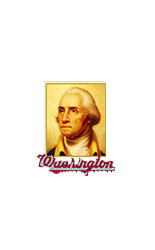Comparison of pre-election WA Poll and Actual Election Returns
For Statewide candidates:
| Contest | WA Poll | Election Results | Difference |
| 2006 Senate | + 12 Dem | + 16.9 Dem | – 4.9 Dem |
| 2008 Governor | + 6 Dem | + 6.6 Dem | – 0.6 Dem |
| 2008 President | + 21 Dem | + 17.2 Dem | – 3.8 GOP |
| Average | + 13 Dem | + 13.6 Dem | – 0.6 Dem |
Comparison of pre-election WA Poll and Actual Election Returns
For Statewide initiatives and referenda:
| Contest | WA Poll | Election Results | Difference | Predicted Outcame |
| 2006 I-920 | +21 No | +23.6 No | -2.6 | Correct |
| 2006 I-933 | +12 No | +17.6 No | -5.6 | Correct |
| 2006 I-937 | +19 Yes | +3.5 Yes | +15.5 | Correct |
| 2006 I-960 | +1 Yes | +2.5 Yes | -1.5 | Correct |
| 2007 R-67 | +17 Yes | +13.4 Yes | +3.6 | Correct |
| 2008 I-985 | +2 Yes | +19.9 No | -21.9 | No |
| 2008 I-1000 | +18 Yes | +15.6 Yes | +2.4 | Correct |
| 2008 I-1029 | +45 Yes | +45.1 Yes | -0.1 | Correct |
| 2009 R-71 | +17 Yes | +6.3 Yes | +10.7 | Correct |
| 2009 I-1033 | +5 No | +15.8 No | -10.8 | Correct |
More about the Poll More about the Poll
The Washington Poll is a non-partisan, academic survey research project
sponsored by the Washington Institute for the Study of Ethnicity & Race
(WISER), a research center at the University of Washington in the School of
Social Sciences. Dr. Matt A. Barreto, an associate professor of Political
Science is the director of the poll.
The survey was administered by telephone, using live callers at the Center
for Survey Research at the UW, based on a randomly selected list of phone
numbers drawn from a list of registered voters. Cell phones are included
only where a voter has listed that on a public list as their primary phone
number. The survey is traditionally in the field in mid-October before a
November election. The margin of error varies each year, depending on the
total number of completed interviews, and ranges from 3%-5%. In 2010,
the poll is being co-sponsored by KCTS-9 TV and KPLU radio.
